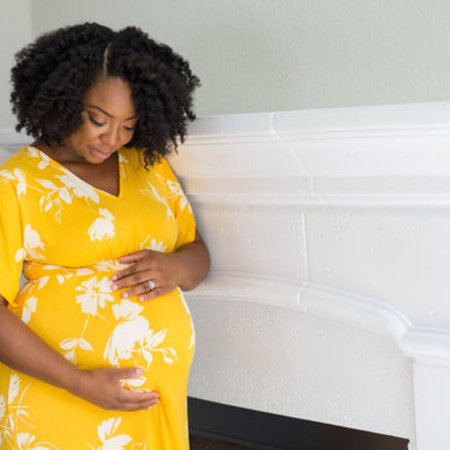
Braxton Hicks Contractions - False Labour
Braxton Hicks Contractions - False Labour
Stacey A
April 20, 2022
Stacey A
April 20, 2022
Braxton Hicks or what we commonly refer to as False Labour are intermittent uterine contractions that can begin very early on in pregnancy, although some never feel it at all or get it later in pregnancy.
In our local palance, we call it ''Ntitiho" - literally meaning tearing and is believed to be the body's way of preparing for actual labour, when it happens in the third trimester. That means it can happen at anytime oo and doesn't mean labour has set in, but if it is consistent, doesn't get relieved with a change in position or is painful, it is safer to visit the nearest health facility or your doctor to rule out preterm labour.
I remember my first time feeling this, although i had read about it, i was scared oo. So the labour i had heard about is about to start? Eeeiiii, will i scream, can i bear it, only for it to stop when i got up to take water ( abeg don't ask me why i got up to take water oo, am still trying to figure it out, lol)
Once a woman gets to her second or third trimester, several inconsistent contractions that have no specific timing or intervals are experienced. This is called the Braxton Hicks contractions (false labour). False labour is your body’s way of preparing you for true labour and it continues until your time is up for delivery.
But how do you know if you’re having true or false labour? What causes false labour and how do cope?
Are your contractions real?
Because most women are not educated about false labour they are often misled to think it is active labour. It’s important to understand that contractions can be relative depending on a woman’s pain tolerance. What seems normal for you, maybe painful to others and for first-time mothers who are unfamiliar with the pain, it’s difficult to describe, making them go through needless evaluations.
To differentiate;
● with true labour;
○ contractions are regular
○ it increases in duration and intensity while walking
○ usually starts in the lower back and radiates to the lower abdomen
○ there is a bloody show
● with false labour;
○ contractions are irregular
○ walking relieves the pain
○ pain is usually felt in the abdomen
○ there’s usually no sign of blood
What causes false labour?
Most pregnant women notice these contractions happen during or after;
● Sex: Because the vaginal and cervical muscles become sensitive during the third trimester due to the baby’s weight and pressure, sexual intercourse may cause contractions that intensify for a while before subsiding. For this reason, some women who are at risk of having preterm labour are advised to abstain from sex until after childbirth.
● Over-exercising: Although working out is very healthy for pregnancy, too much or vigorous activities can cause false labour**.** It is wise not to go hard on yourself when exercising during pregnancy as it can lead to injuries or preterm labour.
Call your doctor immediately you notice your contractions come with blood and severe pain during or after working out**.**
● Dehydration: This is mostly the common culprit of false labour as many of us forget to drink water as often as we should. It is no surprise that drinking water is the first recommend remedy for anyone experiencing Braxton Hicks contractions. Emptying your bladder while hydrating is also essential as it may add more pressure.
● Vaginal examinations: Assessing the cervix or having a strep test can disturb the muscles and cause contractions. Since these exams are unavoidable, communicating your pain to the doctor during the examination is key. The contractions usually don't last long so a little endurance can be helpful.
How to deal with false labour.
● Drink lots of water as doing this eases muscular tension
● Urinate frequently to reduce vaginal tension caused by a full bladder
● Change position to be comfortable while having contractions
● Taking a few minutes of walk usually relieves the pain for most women.
Call your doctor or midwife
● If you are bleeding
● if you are having severe contractions that last for 6 hours (before 37 weeks of pregnancy)
● if you have a continuous leakage of fluid or wetness
● if there are five minutes intervals between contractions for an hour
The bottom line is that false labour can be tricky especially when you’re almost due so it's important to look out for other symptoms of active labour before calling a midwife.
Join us on Moms&Midwives App to continue the chat and learn more.
Other Articles in this Categories

Join The
Squad


Join The Squad


